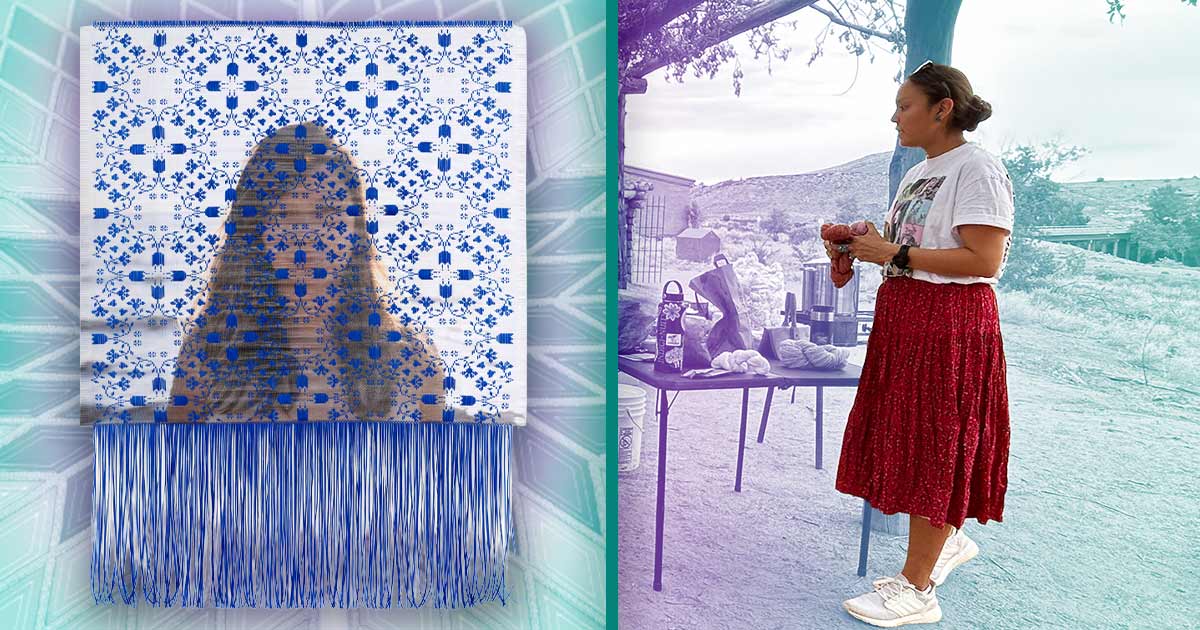
Luzene Hill is making her own “tiny little statement”
It was the encouraging words of a First Peoples Fund staff member that initially led multimedia installation artist Luzene Hill (Eastern Band of Cherokee Indians) to apply for the Eiteljorg Museum Contemporary Native American Art Fellowship.
Hill, who lives in Atlanta, Georgia, was encouraged to apply for the Eiteljorg Fellowship by Miranne Walker, senior program manager. “I told her I thought I was going to apply and she sent me an email that said I should do it, with big exclamation points, and that’s what gave me the confidence to do that,” she said.
Hill went on to receive the Eiteljorg Fellowship. As a 2015 First Peoples Fund Artist in Business Leadership Fellow as well, she had resources and training this year to complete a website, publish Cherokee language books, and continue her installation artwork that addresses the issue of violence against women.
Hill’s work is now seen in collections around the United States and she is featured in Susan Power’s book, “Cherokee Art: Prehistory to Present” and Josh McPhee’s book, “Celebrate People’s History: The Poster Book of Resistance and Revolution.”
Hill’s exhibit at the Eiteljorg will be up until February 28 and is included alongside work by four other Native artists.
Her current project is an artist’s book, “Spearfinger,” which promotes the Cherokee language through traditional myths. Illustrating folktales has given her a way to contribute to the efforts to preserve the language, which is disappearing. “There are only 200 Native speakers left in North Carolina,” she said. “It’s in peril. When it’s gone, it’s more than just the words that are gone.”
"The books help me assert language sovereignty for the Cherokee people. I’m making my tiny little statement."
Hill’s interest in the books began in 2007 when she worked in a language revitalization program and began to illustrate books based on Cherokee myths. It was during that time, she said, that she realized traditional language sometimes reflects culture that isn’t translatable.
She said she has been humbled by the support of her work and has been surprised every time she has been well received, beginning with the first time she was accepted in to the Santa Fe Indian Market on her first attempt in 1997. “If I had known the scope of it, I wouldn’t have applied,” she said. “Ignorance is bliss.”
Hill said she still considers herself a newer artist, having started her art career in 1996 at the age of 48. “I feel like I’m having to make up for lost time,” she said, laughing.
She started with paintings and drawings and eventually moved to books and multimedia installations. Her work to address violence against women began in 2009. The two mediums allow her to talk about two important issues facing Native Americans today—language loss and sexual assault of Native women.
“I make art about silence, being silenced and having a voice,” she said. “This takes two parallel paths.”
Hill attended First Peoples Fund's artist fellows training in the spring and was encouraged to meet other people on the same page as her. The First Peoples Fund staff made her feel like part of the family immediately, Hill said.
“It’s been extraordinary. It exceeded my expectations by far,” Hill said. “From meeting so many people from other tribes to the continuing interest First People Fund has in my work, I am just thrilled at having this connection. It’s a great, encompassing kind of feeling.”









































































































